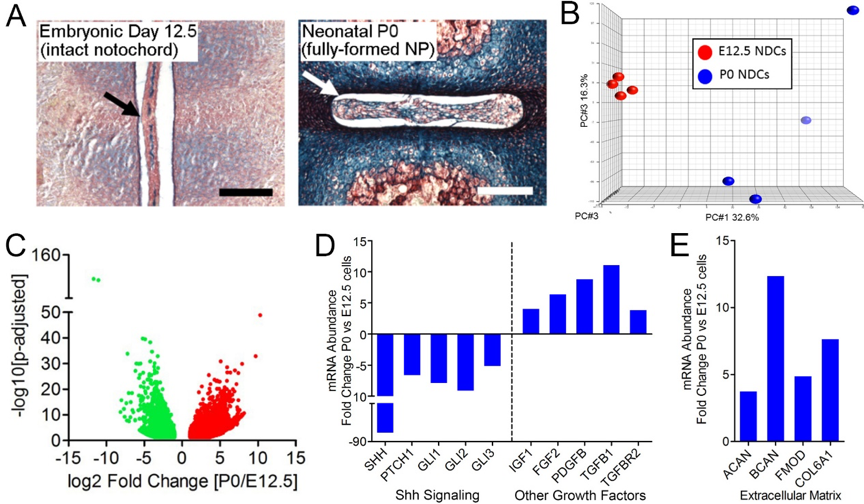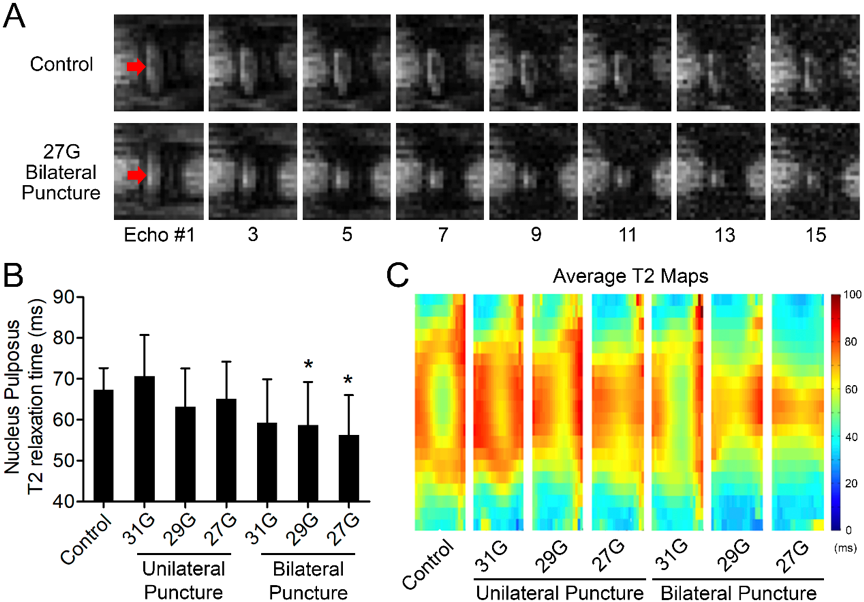Ongoing Research Projects
Developmental Paradigms for Cell-based Intervertebral Disc Regeneration
Lumbar intervertebral disc degeneration is a cascade of cellular, structural and mechanical changes that is strongly implicated as a cause of low back pain. Current therapies for painful disc degeneration, conservative or surgical, focus only on alleviating symptoms. There is a critical need for new therapies that restore disc structure and mechanical function by directly addressing the underlying biological causes. A key challenge to developing effective treatments for disc degeneration is the need to recapitulate the structural complexity and specialized extracellular matrix (ECM) of the component tissues, which comprise cells of multiple developmental lineages. The central nucleus pulposus (NP) is implicated in the initiation of disc degeneration. The developmental origin of NP cells was until recently a point of contention but was resolved through fate-mapping studies in mice that demonstrated conclusively that these cells in their entirety are descendants of embryonic notochordal cells. Embryonic formation of the intervertebral discs centers on the notochord, a highly specialized, mesoderm-derived, transient, midline structure that is present in all chordates during early development. The notochord initially serves as a primitive structural axial skeleton in the developing embryo and as the main signaling center for providing patterning information for surrounding tissues during early development through the regulation of secreted molecular factors. The molecular mechanisms that regulate the transformation of the notochord into the NPs remain poorly understood. During postnatal growth, changes in resident cell populations in the disc NP, including loss of progenitor populations may predispose the disc to degenerative changes later in life.
Key components of this project include:
- To define global gene expression profiles of mouse notochord-derived cells at key stages of embryonic disc formation.
- Elucidate emergent NP cell heterogeneity during disc postnatal growth and degeneration using single-cell transcriptomics.
- Leverage developmental signaling pathways and progenitor cell populations to develop stem cell-based disc regeneration therapies.

Bulk RNA sequencing of notochordal-derived cells during embryonic disc development

Morphological, compositional and cellular changes in the nucleus pulposus during postnatal growth

Non-invasive assessment of disc condition using quantitative MRI in mouse needle puncture models of intervertebral disc degeneration
Publications:
- Peck SH, McKee KK, John W. Tobias, Malhotra NR, Harfe BD, Smith LJ. (2017) Whole transcriptome analysis of notochord-derived cells during embryonic formation of the nucleus pulposus using RNA-Seq. Scientific Reports.
Funding Sources:
University of Pennsylvania Institute on Aging, Sharpe Foundation
Updated on 15 Dec 2019
